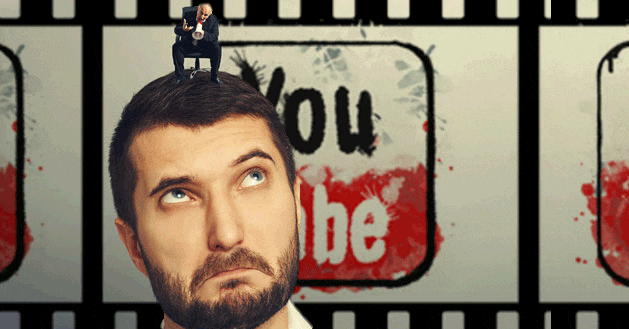 Written by ContentPowered.com
Written by ContentPowered.comIf you’re running a YouTube channel, you want subscribers. Subscribers are the community, the soul, the life of your channel. They represent the people who truly like your content enough to follow what you have to say. They’re the people who engage with your company in the comments, click through to your blog posts and may eventually buy whatever product you’re selling. In short; they’re very important. How do you get more of them?
Of course, there’s all of the basic advice. Post your videos on your blog, for sure. Link to them on social media accounts. Engage with your viewers, ask them questions, respond to their answers. Run paid advertising if it has any serious returns. What you’re looking for are the creative, less common ideas to share your videos and encourage subscriptions.
1. Debut New Videos in Hangouts
Why not give a few dedicated fans a sneak peak at your content by scheduling limited-space viewings of your videos via Google Hangouts? This does a few things. It gains you more connections with Google+, which is always good. It gives you a chance to interact intimately with a few close fans, complete with commentary on your video as it becomes necessary. You get to ask questions about the video and see what your invested fans think. You also get to open yourself up to their questions, so you can make notes about them for future videos as well as answer them live.
Of course, you need to make sure to properly advertise your hangouts meetings. They aren’t a great advertising tool if no one shows up. How does this get you subscribers, you ask? Well, if you make your hangouts public, you can encourage them to subscribe to see when the video goes live. Alternatively, you can limit your hangouts to only those who subscribe to your channel, giving incentive for them to click the button.
2. Link Videos in Email Newsletters
You may not think of linking to a video – or to your channel page itself – in your newsletter to be much of an innovative solution, but that’s only if you use it once. If you’re linking to a new video with each newsletter, you can easily encourage subscriptions. It helps if you set your videos to unlisted first, so the newsletter is the first place to see them. If you find this method encourages too many newsletter signups – if there is such a thing – and too few YouTube subscriptions, you can post the video before the newsletter goes out and tell everyone if they want to see the videos sooner, they can subscribe to your channel.
3. Use a Video Endcap to Ask for Subscriptions
Add a 10-20 second clip at the end of your video and use it to ask for subscriptions, to ferry traffic to a related video or to advertise another channel. The video endcap is an excellent place for putting any message you could want to include. Include calls to action for blog visits, social media shares, video comments, related video clicks or anything else. Just make sure you’re not trying to cram in too much at once; users won’t do more than one or two actions at best.
You can also use the video endcap to introduce new content, but you should be aware that your endcap won’t change. If you’re promoting a brand new video, six months from now anyone watching this current video will be seeing old news. It’s better to use calls to action that are more timeless.
4. Run a Contest for Subscribers
You can do all sorts of things with your subscribers. They are a captive social audience, and you can use them the same way you might use an audience on another social platform. In fact, they’re probably largely composed of people who use those other social platforms.
What sort of contests could you run? The sky is the limit. Give away a product to a randomly chosen commenter as long as they subscribe. Give a prize to a commenter with the highest rated top comment. Ask for video responses to your video and use them in future videos. Ask for pictures you can use in your video to illustrate points. Just about anything you could want to do can be done with the YouTube social network.
5. Post Videos Responses to Questions
You don’t always have to post your videos on their own. You can attach them to other videos as video responses, and in some cases, you probably should.
For example, say you made a video two years ago about a particular subject. Now you want to make an updated video, but you don’t want to take down the old video. Post the new video as a video response; it will still show up to your subscribers as a new posted video. Go back to the old video and edit the description to include a message – at the top, above the fold – about the new updated information found in the video response.
Another example is when someone else, a rival or partner in your industry, posts a video and you want to add your thoughts. Rather than post an unrelated video, or try to post a comment that may get lost, post a video response. It’s much more visible and will channel some of their audience over to your profile. There, you can go about trying to convert them into subscribers as well.
6. Network and Cross Promote With Other Channels
Above, in the section about the video endcap, you may have noticed a little phrase that turned your head. Why would you want to promote a video on a channel that isn’t yours? This is why. If you partner up with other channels for cross-promotion, you can advertise a partner in your endcap. They, in return, will produce videos that promote your content in the same way.
This helps you because it grants you access to the audience of your partner. More importantly, there is no limit to the number of people you can partner with, as long as you can support a mutually beneficial relationship with them. It’s only when you make commitments you can’t support that things get less effective.



Great piece, I wish I could get more subscribers some how, but I don’t want the wrong kind…